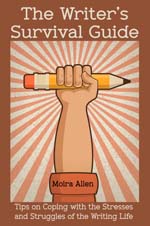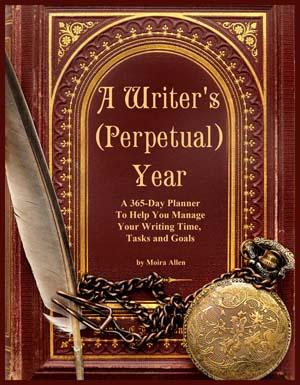 Your Guide to a Successful Writing Career
| |||
|
by Kathryn McCullough In a perfect world, a writer would submit his or her screenplay directly to the head of a studio, who would immediately read it and decide whether or not to buy it. In the less than ideal reality of Hollywood, the journey a script takes from writer to executive is much longer and more circuitous. Because studios, production companies and producers receive hundreds of scripts each week, it is not possible for the top executives to read every submission. Instead they rely on a pool of story analysts who read the scripts first and write up coverage reports that indicate whether or not the script is worth being read at the next level. Many agencies and screenwriting contests also rely on readers and coverage, due to the volume of submissions they receive. Having a knowledge and understanding of what coverage is and how it is used can be helpful for writers. By looking hard at your current draft and applying the same critical judgments that a reader will be using, you can strengthen the most important areas of your script, such as characterization and plotline. The first page of any coverage report contains submission information: the name of the agent or producer who submitted the script, the name of the executive who received it, and the script's title, author and date of submission. This section also lists key story elements such as the time period, setting and genre of the screenplay. One of the first things an executive looks at on the cover page is the logline. The logline, also known as the premise, is a one-sentence summary of the script. Executives are not just looking for originality here. They are looking for dramatic conflict and an active protagonist. For instance, the logline of Tootsie would be: "A desperate, unemployed actor poses as a woman in order to land a role on a soap opera and gets insight into the female psyche as a result." In one sentence, we know who the character is, what his arc will be and what the main story thread is. By the end of your first draft, you should be able to similarly sum up your plot. If you are having trouble doing so, it is probably because you have not yet figured out what the central tension of your story is. Before you move on to the next draft of your script, ask yourself: Who is the main character? What does he or she want? What are the obstacles to this goal? The clearer you can be in answering these questions, the stronger not only your logline will be, but your screenplay as well. Under the logline is a grid rating the different elements of a script. The major components are: premise, characterization, plotline and dialogue; they are rated as poor, fair, good or excellent. It is not the premise that carries the most weight here. While it is important that your logline or premise be precise and coherent, it does not have to be what is known as "high concept." A mediocre script with an inventive premise is much less likely to be recommended by a reader than a fair premise that has been expertly executed. Strive to develop your characters and plot to the point where they will be rated "good" or "excellent" by a reader, and not just "fair." Some companies include other elements on the grid for readers to rate, such as "title," "structure," "minor characters," "artistic value," and "commercial value." High ratings in the basic categories of plotline and character usually translate to high ratings in these boxes as well. Some companies also ask the reader to give an approximation of a budget. This is worth knowing, because a new writer has a much greater chance of breaking in with a well-crafted low-budget script than with an expensive special effects-laden extravaganza that only a few companies have the resources to make. Finally, the first page includes a recommendation line, where the reader gives a script a "recommend," "consider" or "pass." A script with some merit may still receive a "pass," because readers are expected to consider or recommend only those scripts that far surpass the multitude of submissions received each week. This is why many coverage reports include a separate recommendation line for the writing. Therefore, even if your script is not appropriate for a specific company, if it has been exceptionally well-executed, the reader will recommend you as a writer, which can lead to a meeting and possibly writing assignments. After the cover page, the reader writes up a short synopsis of the screenplay, usually one to two pages long. Readers do their best to get across the tone and flavor of the script within this shortened form. However, it helps immensely if the screenplay has a strong sense of cause and effect, in which one plot development leads clearly to another; has subplots that tie in logically and smoothly; and contains characters who change and grow credibly throughout the script. It is immensely useful for writers to attempt a synopsis themselves early on in the development of their screenplays. In the synopsis, each sentence should lead inevitably to the next. If there are awkward transitions, you might be missing some key dramatic beats in your plot. If the synopsis includes a lot of "and then this happened; and then that happened," this indicates an overly episodic story with a weak structure. Writing the synopsis makes it easier to pinpoint these types of problems because you are boiling your story down to its essence. In order to keep the synopsis to two pages maximum, readers will include only the essential beats from the main plot and will sum up subplots in single paragraphs. If, even following this strategy, you are unable to hold your synopsis to two pages, it may be because there is a split focus in your script; you are trying to tell two different stories instead of settling on one central plot. Or, it may be because your story takes too long to get started. Go back to your script and see if it is possible to start the script later, at the first moment of conflict. The final page of a coverage report consists of comments. Here a reader analyzes what works and/or does not work in a screenplay and explains why the script is or is not worth considering for development. As with the rating grid on the first page of the report, the elements a reader is likely to focus on in the comments are the characterization and the plot. Characters who are compelling, three-dimensional, original, and active tend to be praised. These are characters whom an audience will root for and/or care about, but just as importantly, they are roles that will draw actors. Plots that are inventive, suspenseful, entertaining and complex will intrigue audiences, will give the company that makes the movie some cachet, and will appeal to top directors. Before you send your screenplay anywhere, first judge it as if you were the reader. Write up a coverage report for it. Be ruthless and honest with yourself. If there are any parts of your script that you feel fall short of excellence, work on those until they excel. Making this effort will propel you past the many other writers trying to break in, and will make it more likely that your screenplay will get the "recommend" that all writers crave.
This article may not be reprinted without the author's written permission. Kathryn McCullough has been a Hollywood story analyst for over 14 years, reading for companies such as Castle Rock, Miramax, Imagine and Morgan Creek. Her screenplay Santa Hood won the Austin Film Festival Screenwriting Award and was purchased by Universal. |
| ||
| |||




